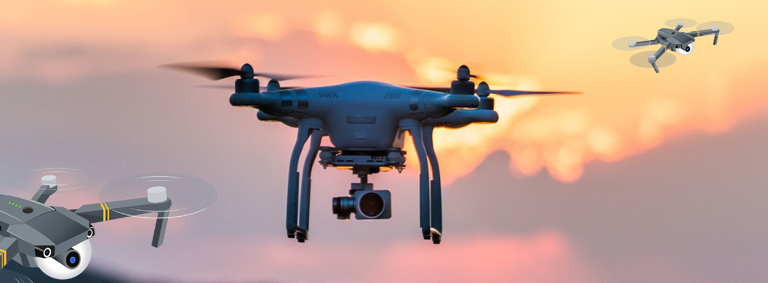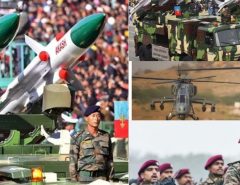As India charts its course for the next decade, one of its most promising sectors—drones—
stands at a pivotal juncture. Over the next 5-10 years, India could emerge as a global drone
hub, a transformation that has the potential to boost the nation’s GDP by 1% to 1.5% and
create over half a million jobs. The road ahead is filled with opportunity, but it requires a
concerted effort to nurture and expand this nascent industry.
In the past decade, India has witnessed transformational policy reforms in the drone sector,
encouraging the indigenous industry alongside other deep tech sectors. When I founded
Asteria Aerospace in 2012, the industry landscape was vastly different—there was no
framework for regulating drone manufacturing and operations, and securing approvals was a
daunting task. The situation further worsened in 2014 when the DGCA imposed a blanket ban
on drone operations in the civil airspace due to security and safety concerns. However, post
2018, the tide began to turn as the government started to recognize the strategic importance
of drone technology. In 2021, Ministry of Civil Aviation launched the Drone Rules 2021 which
liberalized the manufacturing and operations of drones. Further progressive policy initiatives
such as the Production Linked Incentive (PLI) scheme for manufacturing of drones and drone
components, government procurement support for indigenous products, and export
liberalization have collectively sparked a thriving drone ecosystem in India.
The momentum gained is reflected in the recent Union Budget, which signals continued
government backing for the drone sector. Key initiatives include increased allocations for the
PLI scheme in 2024-25 and substantial funding for programs like the Namo Drone Didi
Scheme for use of drones in agriculture. Further, drones can play a huge role in the digitization
of land/property records in urban and rural areas through GIS mapping which is a priority area
in the Union Budget. Similarly, the government has a focus on creating a Digital Public
Infrastructure in agriculture, Agri Stack, which will serve as a comprehensive repository of
farmer-related information, including identity, land records, crop details, insurance, and
income. Drones, alongside other tools, will be instrumental in gathering this data, aiding in the
development of a formal land registry system for farmers. These initiatives underscore the
growing applications of drone technology and are set to catalyse investment in this strategic
sector.
The focus on skilling in the Union Budget also aligns perfectly with the evolving needs of the
drone industry. As the demand for skilled professionals in drone manufacturing, operations,
maintenance, and data analytics rises, there are significant opportunities for targeted training
and upskilling. These initiatives will not only bridge the talent gap in the drone industry but also
create transferrable skills which can be utilized in other deep tech sectors, which are
collectively crucial for India to achieve technology superiority in the next decade.
Looking ahead, we anticipate the rollout of new policies, including support for Beyond Visual
Line of Sight (BVLOS) drone operations, a National UTM (Unmanned Traffic Management)
policy, a National Deep Tech Startup Policy, and operationalization of the Anusandhan
National Research Fund. These policy frameworks will empower drone startups, driving
research, development, and innovation across the industry. New use cases for drones in
Logistics and Urban Air Mobility will also emerge with these evolving regulations.
In conversations with various drone startup founders, a common theme has emerged: a
commitment to fully comply with drone regulations. These entrepreneurs understand that
adherence to these regulations is not just a legal obligation but a critical factor for safety,
security, and sustainable growth. Furthermore, there’s a growing focus on increasing the levelof indigenization as a means of sustainability. Where once Indian drone component
manufacturers were few and far between, today, there’s a serious push towards investing in
manufacturing components such as motors, batteries, electronics, and sensors.
With a strong foundation in place, the time is ripe for Indian drone and component OEMs to
explore and expand into international markets. Establishing an export promotion council
specifically for drones would be a significant step in this direction. Measures such as financial
support for drone companies to participate in international exhibitions for marketing, extending
lines of credit to developing countries through institutions like EXIM Bank for defence
equipment procurement from India, and fast-tracking export permissions will enable further
growth of this segment.
India is poised to become a global drone superpower, thanks to several strategic advantages:
• Shifting Global Sentiments: Anti-China sentiments and the global push to de-risk supply
chains have created a demand for reliable alternatives, positioning India as a key player.
• Technological Synergies: India can leverage the strengths of the country’s IT sector to
develop software and AI/ML capabilities for drone operations, data processing and
analytics, which is a significant part of the value stream of drone solutions.
• Supportive Ecosystem: The combined efforts of central and state governments have
enhanced India’s capabilities in electronics, materials engineering, and specialized
manufacturing, all of which are essential for drone production.
• Skilled Manpower: Availability of a large pool of tech savvy manpower that can be trained
in emerging technologies
• Cost-Effective Manufacturing: The ‘Make-in-India’ initiative, coupled with the
Atmanirbhar Abhiyan, is enabling Indian drone manufacturers to produce competitively
priced and quality focused products and solutions, boosting their global appeal.
Today, the ‘Advantage India’ narrative is more compelling than ever. By capitalizing on this
unique position, India’s drone industry is poised to soar to new heights, with Indian drone
exports leading the charge on the global stage.
The author is Co-Chair, FICCI Committee on Drones





